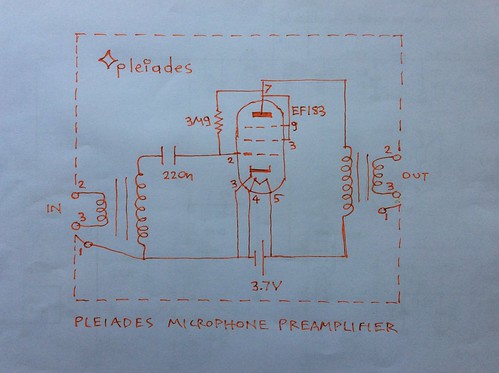It worked!
Amazing sound as expected.
Signal path, setup:
Male singing voice - Sennheiser MD441 U3 - Pleides (R,L) filter - (Pleiades L filter) - Pleiades V6 Nuvistor head amp - Sony TC-D5 Pro - Sennheiser HD580 - Singer's (listener's ) brain
The MD441 U3 comes without a bass compensation filter.
The Pleiades (R,L) is used for Flecher Munson or voice effort curves excess bass to listener's brain compensation
The Pleiades L filter was used for proximity bass compensation if needed.
It may be remembered that a straight forward Pleiades L filter connected to the amazing MD441 did not sound too well.
Today the reason becomes more apparent in practice. A high cutoff frequency had to be used but then the microphone sounded thinner or less in sound body. It turns out the 6dB slope is already too much.
A Pleiades (130Ω,40mH) filter (R in series with L and the ends connected to pins 2,3) sounds spectacular.
Without it the mic sounded bass heavy for soft singing male voice. When the filter it is connected the sound is natural. When treble boost is activated in the mic it sounded brilliant again.
Very nice sound was also with the Pleiades 145Ω,42mH but not when HF boost was activated. There was too much lack in midrange.
This is for about 4in mic distance.
When singing at 0 to 1in the bass was excessive due to the heavy proximity effect. For this case a 333mH (100Hz) Pleiades filter was cascaded after the R,L filter. (Note: there is a 6dB per octave low cut already because of the primary inductance of the output transformer and the electron tube plate (anode) (internal) resistance the value of which may be adjusted by changing the Pleiades bias resistor. When using an EF183, 6MΩ and the specific Pleiades output transformer (see previous posts) this happens below 100Hz. So if a higher inductance output transformer is used the Pleiades filter may have to be 160mH or approx. 200Hz. It may have to taken into account top that the first case of 2 low cuts may result in 12dB per octave high pas or low cut. The EMI RS106A should be 12dB per octave.)
It sounded amazing.
This is the schemagic (auto correction of iPad for schematic) of the Pleiades V6 used but with 22nF, 6MΩ Pleiades bias resistor and the Nuvistor 7586 electron tube.

Reference:
The classic Lowe, Morgan on flat frequency response from producer's brain to listener's brain:
Sound Picture Recording and Reproducing Characteristics - D.P Lowe, K. F. Morgan - JSMPE
No comments:
Post a Comment